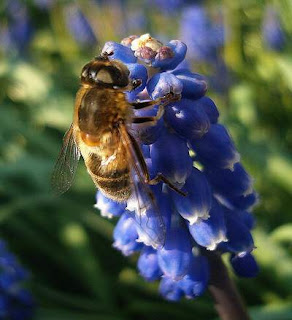Reporting from the land of milk and honey. Here’s some
food for thought on the seasonal ingredient (honey that is). The month of
September/October is a festival fun land for the Jews. Every week is another
celebration, beginning with the Jewish New Year and ending with outdoor booths and
lots of greenery. One thing that surrounds this period of time is the simple
and timeless food substance, honey – which accompanies every meal. In fact, in
September 2011, 2000 tons of honey was consumed by Israelies. And just to add
another fun fact – 150 million text messages were sent as the New Year
approached. Lucky phone companies.
A Little Bit of History…
Simple reason we drizzle (or soak) our bread in honey and
use it in abundance throughout this time period? It was a tradition instituted
by all the Jewish dentists to increase their client base. Not really. More
along the lines of being hopeful that our year ahead is as “sweet” as honey.
Honey chicken, honey cake, honeyed carrots (tsimmes), honey soup (just
kidding), the notorious apple dipped in honey, and some even enjoy
mixing chummus and honey. This custom actually dates all the way back to the 7th
century, probably even earlier than that, although this was the first recording
of the tradition. The vague term ‘sweet’, is an umbrella for all good things –
fulfillment, happiness, security, peace, contentment and serenity. It also
serves as a reminder of the Jewish homeland, otherwise known as the land
flowing with milk and honey. Traditional honey from Israel Israel
--Random halachic note—
Most products that are produced by non-kosher animals
(e.g. camel milk) are considered not kosher. Even though bee’s aren't kosher, the honey from bees is still given the stamp of approval. The rabbis explain this is because the sac in the bee that contains the honey is only a storage place,
rather than it being an integral part of the bee’s body. In contrast, milk-producing
organs (like in a camel) are an integral body part of the animal, meaning the
milk is an integral part of the animal, while honey is not.
And now for some nutrition:
A Spot of Nutrition…
Honey always seems to be a hot topic in the media. Bad for
our teeth, but then again, it’s natural so it must be good for us right?
Here are the facts, starting with the good…
- While sugar contains 46 calories per table spoon, honey contains 64. However, honey ends up being a slightly better choice calorifically, because it is a lot sweeter than sugar and therefore you end up using less of it.
- Honey has had medicinal properties dating all the way back to the old days, including its ability to help cure a sore throat, heal wounds and mixing it with tea to assist with sleeplessness..
- It also can act as an anti-oxidant, anti-bacterial, anti-inflammatory, anti-viral, anti-parasitic and anti-fungal (what a mouthful).
- Honey contains vitamin B2, B6, iron, calcium, phosphorous and manganese.
- Honey has a lower GI than sugar – meaning that it is absorbed more slowly into your blood stream.
- While sugar contains 46 calories per table spoon, honey contains 64. However, honey ends up being a slightly better choice calorifically, because it is a lot sweeter than sugar and therefore you end up using less of it.
- Honey has had medicinal properties dating all the way back to the old days, including its ability to help cure a sore throat, heal wounds and mixing it with tea to assist with sleeplessness..
- It also can act as an anti-oxidant, anti-bacterial, anti-inflammatory, anti-viral, anti-parasitic and anti-fungal (what a mouthful).
- Honey contains vitamin B2, B6, iron, calcium, phosphorous and manganese.
- Honey has a lower GI than sugar – meaning that it is absorbed more slowly into your blood stream.
What about the bad?
- Regardless of this fun fact, according to many opinions - neither of the two sweeteners are a ‘better’ option when it comes to diabetes. They both raise blood sugar levels and should be consumed as an ingredient, rather then on their own.
- For anyone younger than 12 months, honey should be completely avoided because it could cause botulism, a type of food poisoning which happens to be lethal.
- A lot of enzymes and nutrients are destroyed by the process raw honey goes through to give is a clear appearance.
- Watch out for tooth decay. All that sticky stuff is not good for your teeth.
- Regardless of this fun fact, according to many opinions - neither of the two sweeteners are a ‘better’ option when it comes to diabetes. They both raise blood sugar levels and should be consumed as an ingredient, rather then on their own.
- For anyone younger than 12 months, honey should be completely avoided because it could cause botulism, a type of food poisoning which happens to be lethal.
- A lot of enzymes and nutrients are destroyed by the process raw honey goes through to give is a clear appearance.
- Watch out for tooth decay. All that sticky stuff is not good for your teeth.
Consensus? As with all things nutrition, and I feel like I have
been saying this a lot lately. It's all good in moderation. I guess
at this time of the year, we would probably be over that point
of "eating in moderation" in general, so what's a little honey
gonna hurt?
Sweet year people!





No comments:
Post a Comment